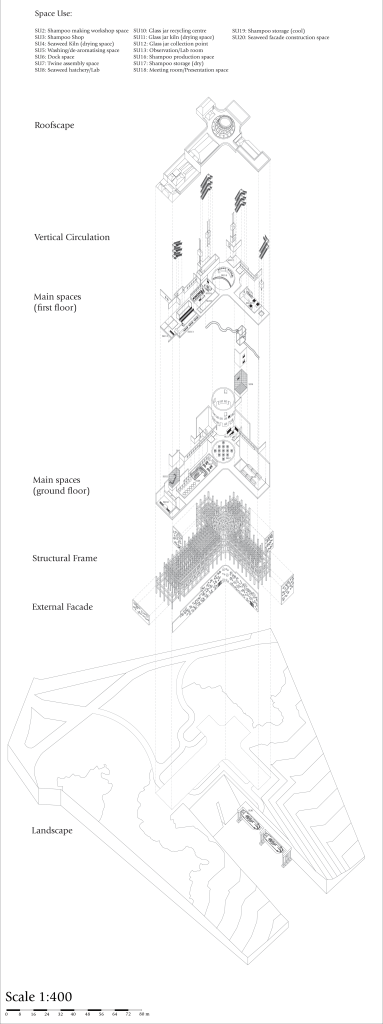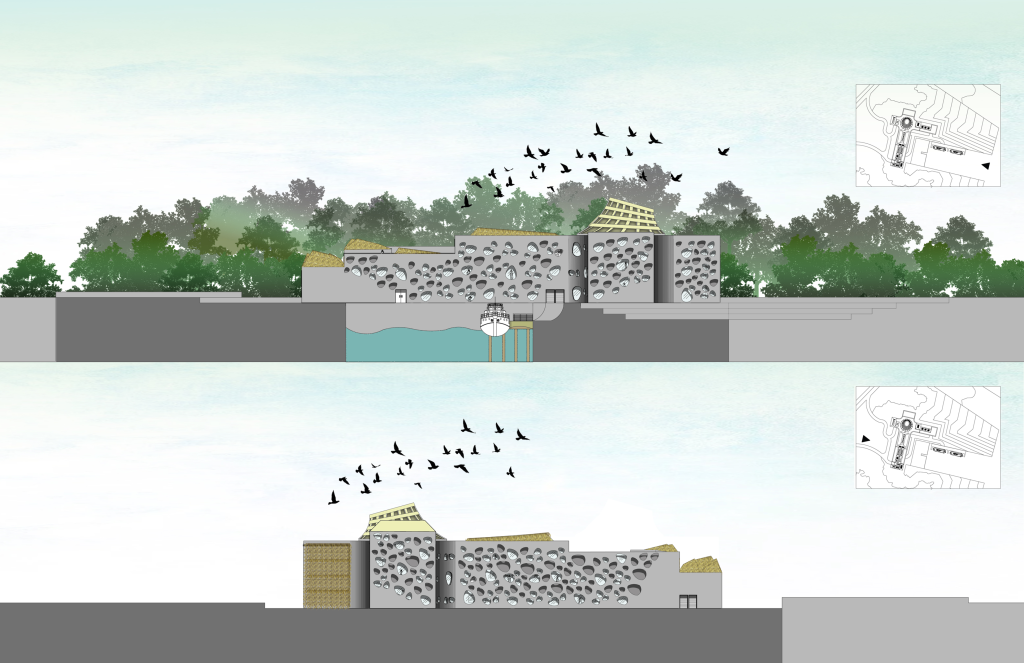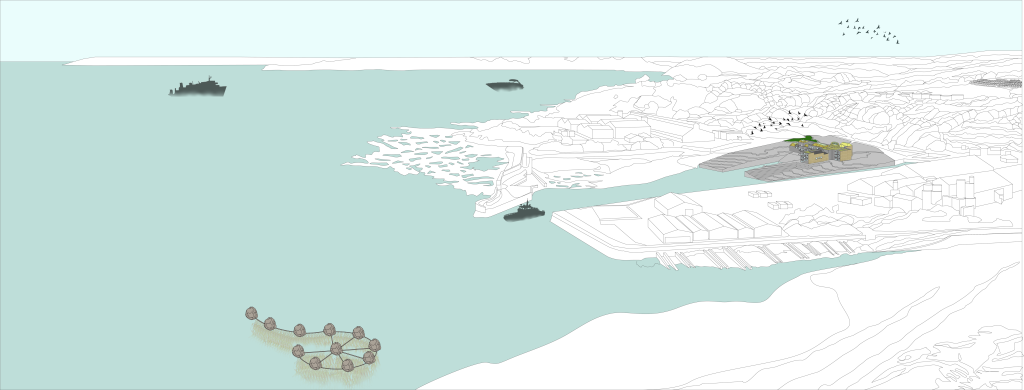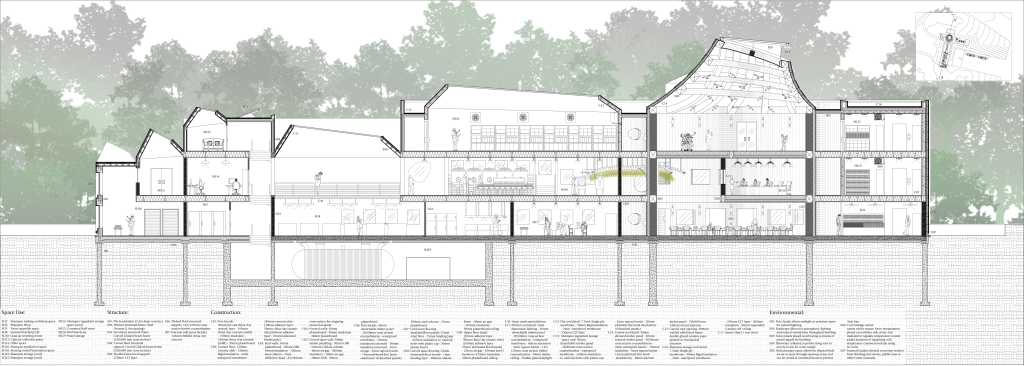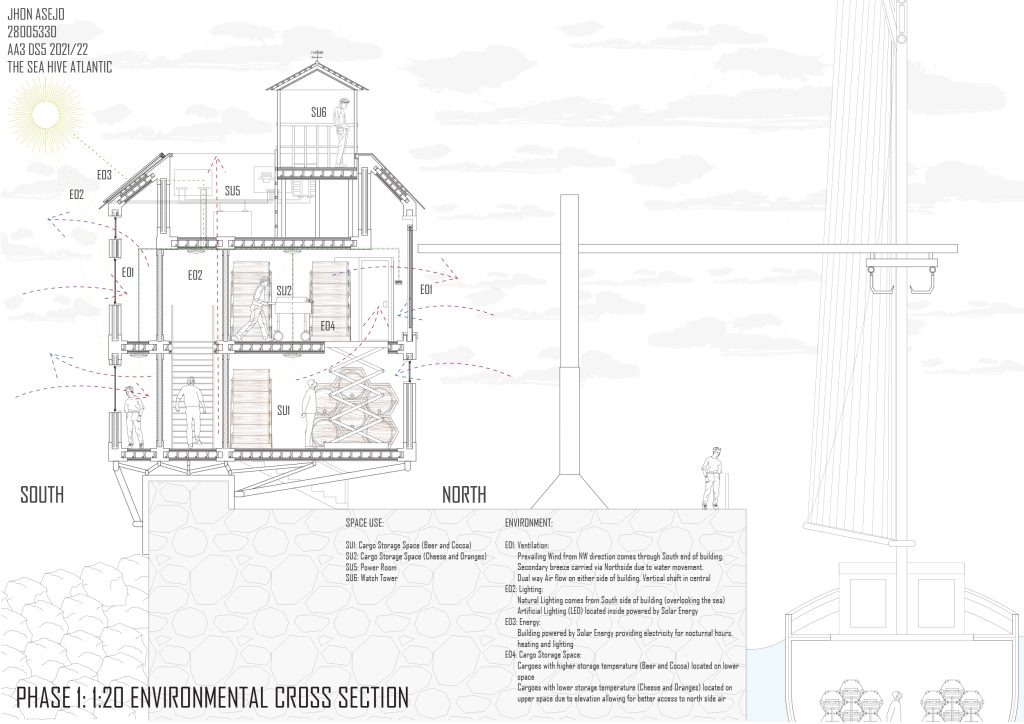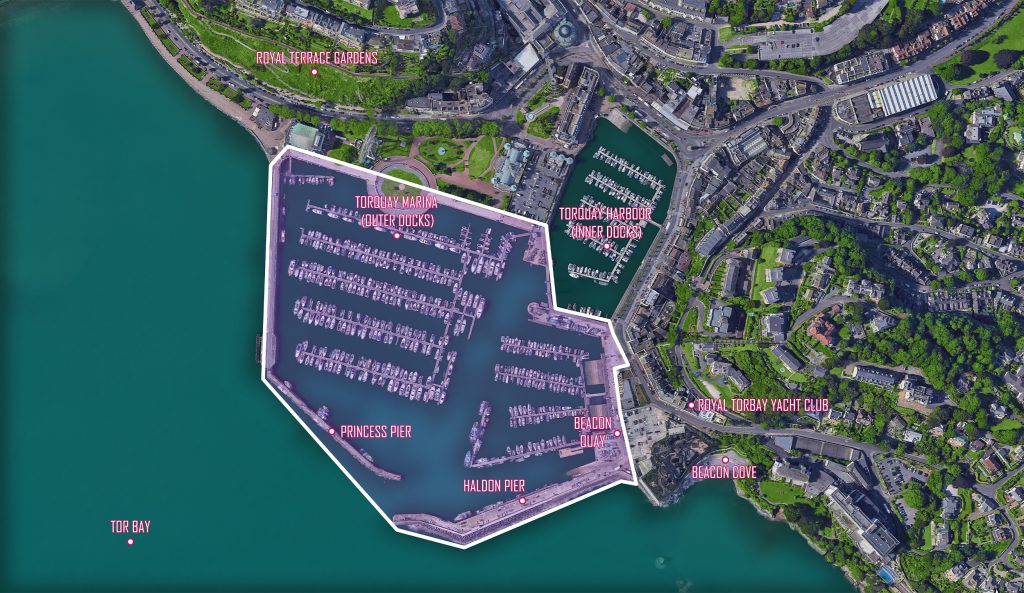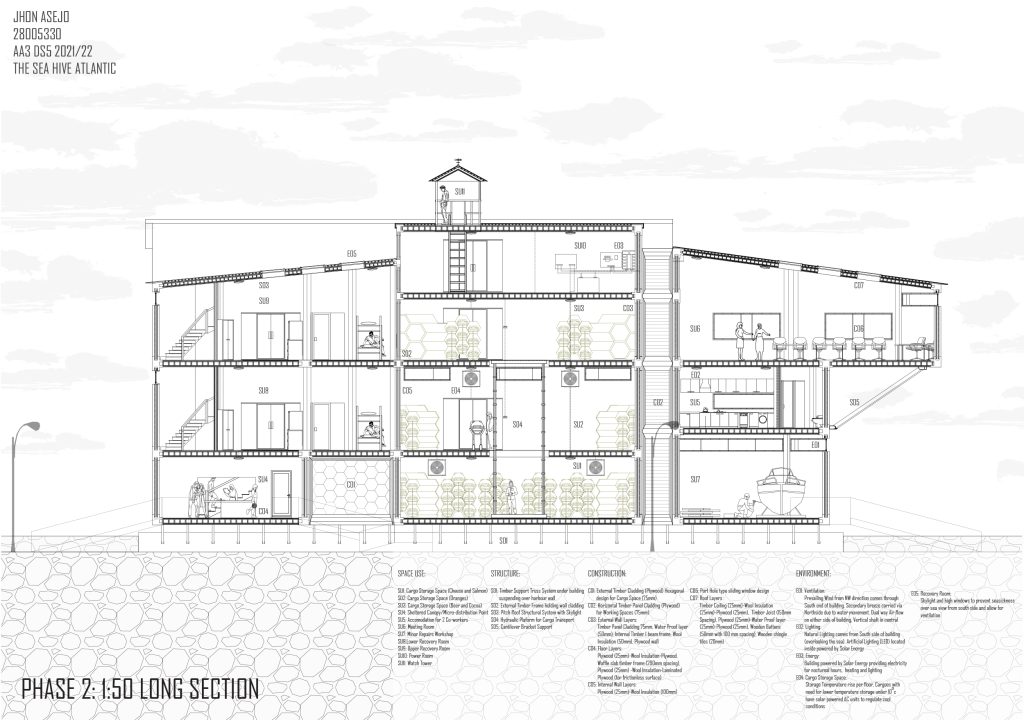Jhon Asejo
Locks of the Sea
Seaweed is a natural product with incredible properties that is starting to be utilised increasingly in today’s climate; with local offshore farms beginning to sprout up in Cornwall, the Par Horticultural Seaweed Centre is both a processing plant for horticultural seaweed products and a community space for locals and tourists alike. While distributing these amazing products across the country it was also important to ensure that the project also gave back to the community, with spaces for events, a beautiful garden to enjoy and tourist attractions to experience; bringing people together in Cornwall and providing a new route for income in one of the most impoverished counties in England. Each “wing” of the dock represents the two areas of both ‘production’ and ‘community,’ combining in their use and processing of seaweed.
Seaweed, or Heterokont, is becoming an emerging material that’s used to create products from cosmetics, packaging, medicine and etc. while it also holds value in its use in the past that different cultures have formed their own beliefs on seaweed.
Locks of the Sea capitalised on linking seaweed use the past to the future through the means of site production and formation. The project derives from local Cornish mythology, The Sea Bucca, which is an eel like creature with seaweed hair that is known to appear in the coastal region during the storm and known to help the local community at times of need.
The project caters to modern day issues related to hair, hence the main production on site being natural shampoo, where the seaweed within contains properties of healing and revitalisation of the hair and scalp. The concept of hair and scalp is further integrated in the physical representation of the outer façade of the building.
Keywords: Hair and Fibres, Heterokont, Mythology, Atmosphere, Circulation
Emails: jhonadrian.asejo@gmail.com / adrian.asejo@yahoo.co.uk
LinkedIn: linkedin.com/in/jhon-asejo-87a23a224
The Sea Hive Atlantic
Introduced in the heart of Reading Town, Hogmanay, the Scottish celebration of New Years, brings a large infusion of culture and festivity to the local area. Cock-a-Leekie soup, being an integral cuisine of the Scottish, accompanies the festivities. The influx of Hogmanay culture, introduced by the arrival of the Soup Facility, will indulge Reading in a host of traditions that seek to bring people together to celebrate the New Year and the fresh start that follows midnight. On New Year’s Eve in Reading, the public are invited to join in the activities, including; farming the ingredients for the soup, trying the soup, setting Juniper branches alight at midnight, Ceilidh dancing, drinking homemade Gin, and the chance to watch as the chefs produce the soup from raw ingredients on site.
Cock a Leekie , Scotland, Timber, Homemade, Feathers, New years
Learning from Fairtransports’ and Timbercoasts’, The Sea Hive Atlantic aims to expand the emerging concept of a sustainable mini-distribution point that acts as a figurative platform on pro-sustainable shipping and cargo exportation.
The chosen site for this distribution point, Torquay Harbour, Devon, UK, plays a significant role of spreading the message on pro-sustainability as it’s a hotspot for the upper class in society, those with wealth and influence in the world as the exposure to this demographic can lead to promoting this ideal to a global scale.
The chosen Cargoes that this distribution point holds are: Cocoa, Beer, Cheese, and Oranges which are all produced and exported from Atlantic coastal regions. The cargoes and the components that make the distribution point are carried by wind powered sail boats such as the Avontuur, thereby extending the sustainable aspect of this project.
The structure itself is made to cause little to no impact on the existing harbour wall it’s mounted on as it’s aimed to be deconstructed on site so that it can be used in other ports around the world as well, causing as minimal of damage as possible.
Keywords: pro-sustainability, Social-Environmental influence, Deconstruction, Cargoes


